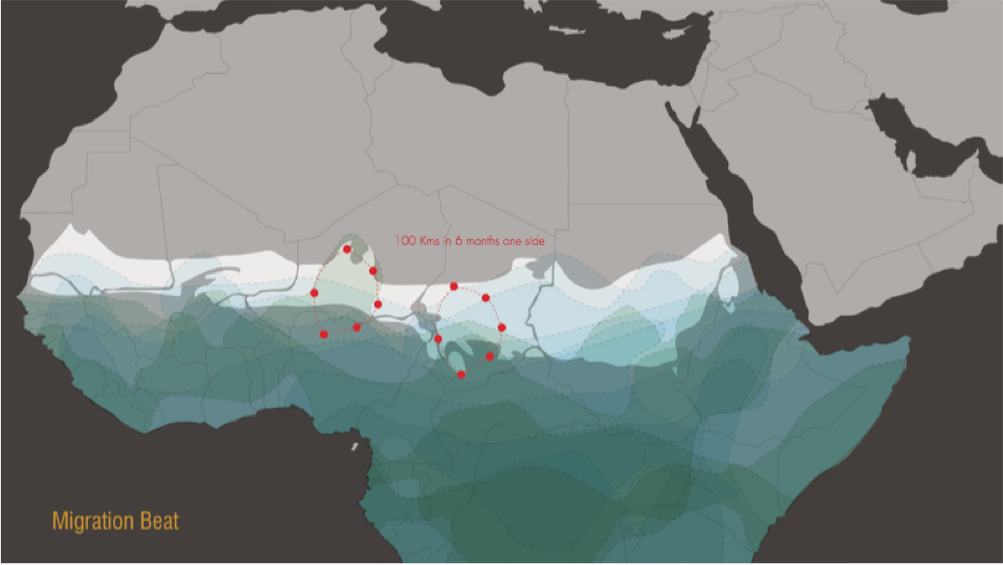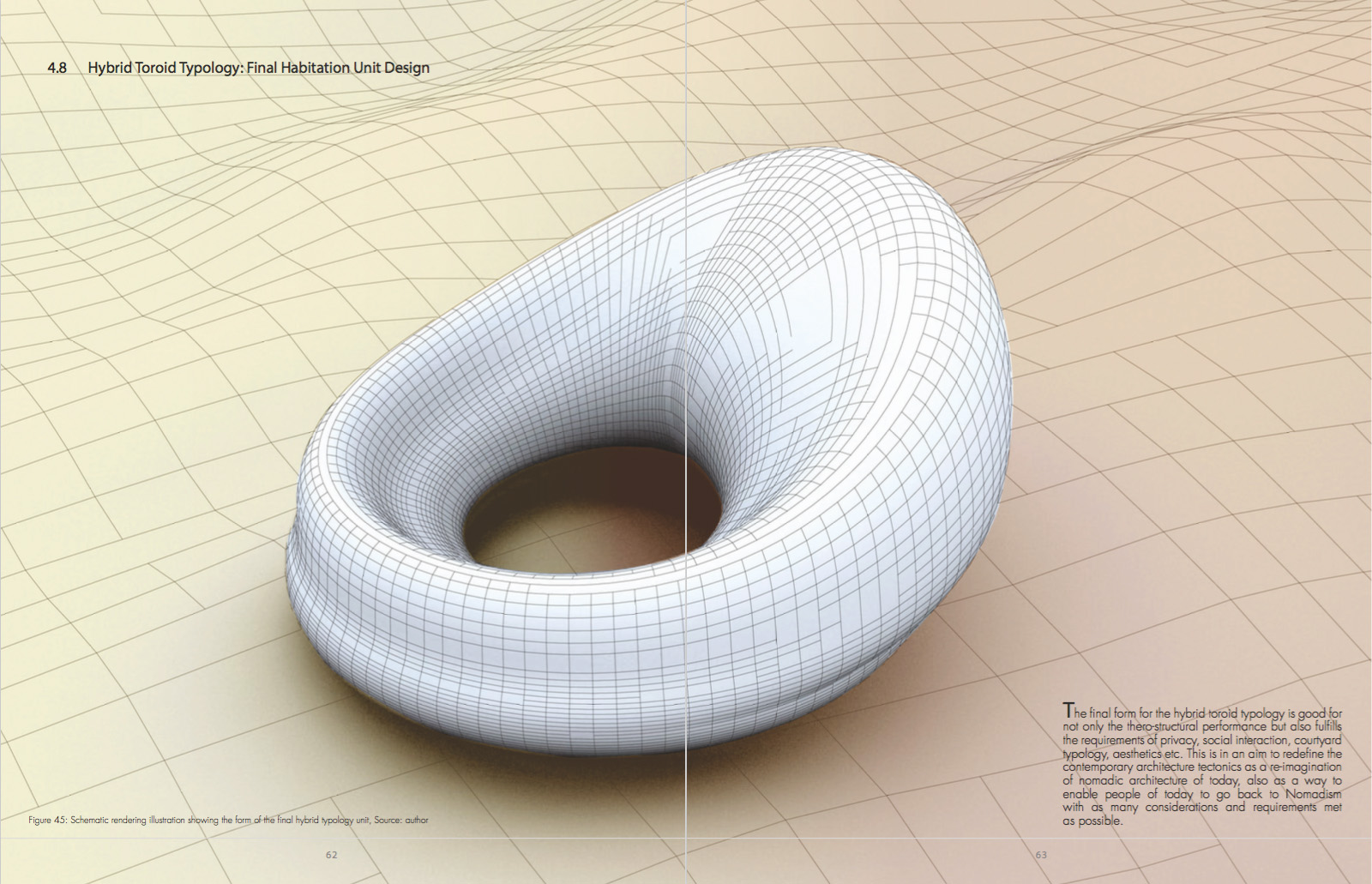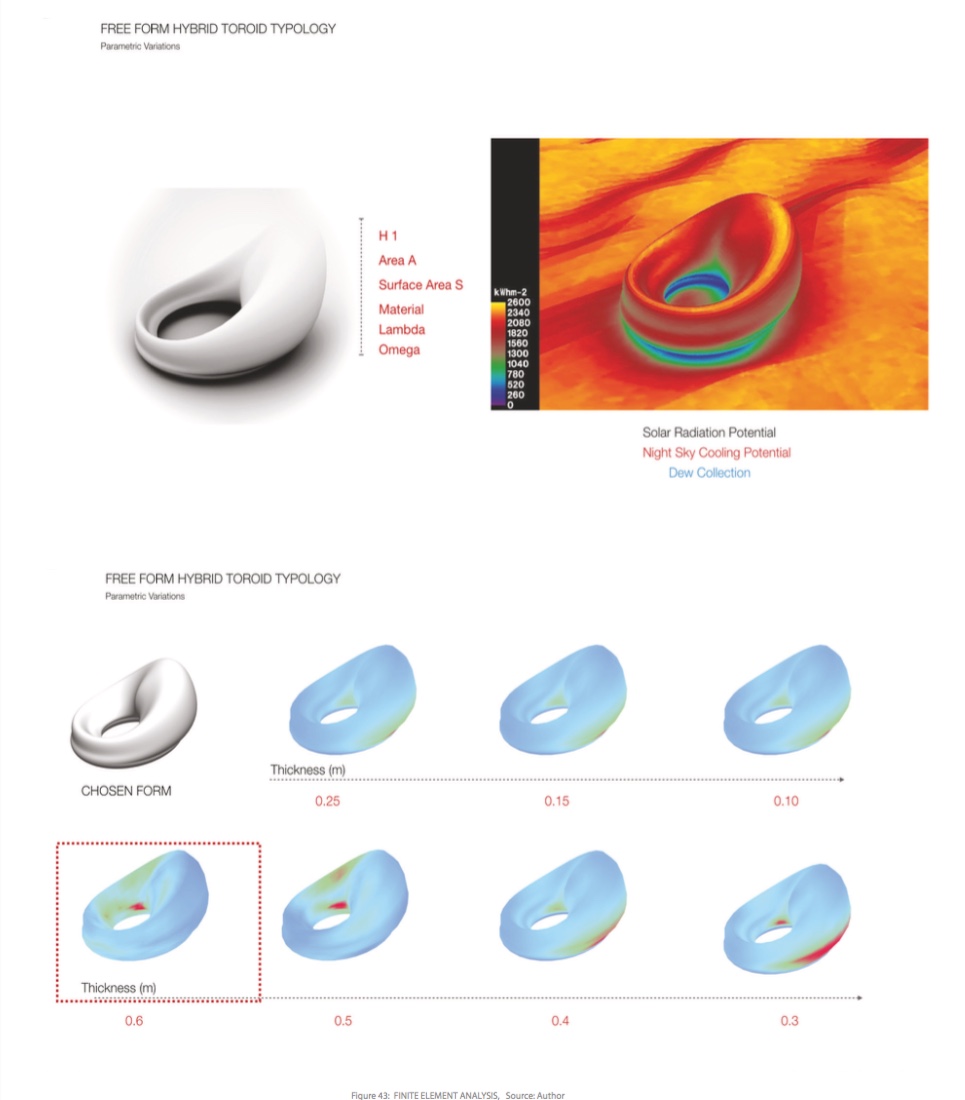Mobilizing Habitations: Re-Imagining Nomadic Architecture in the Sub-Saharan Sahel Region

Migration routes matching the annual beat of monsoons in the Sahel region.
by Aman Singhvi (MDes ’16)
As land is increasingly commoditized with an upsurge in population, it’s not hard to imagine that some people will be forced into the harsh, uninhabited landscapes to survive. In the context of adaptability and survival, this project aims to examine the concept of Mobility and the possibilities and constraints enabled by it. A nomadic community in the shifting ITCZ zone of Africa is reimagined in terms of adaptations in architecture and migration. In contrast to the present ideology of mobilizing resources to concentrate them at consumption-heavy centers, the proposition is to mobilize communities to move in sync with the natural resource cycles.
The emphasis becomes on optimizing structure, thermal regulation and migration under the constraints of slow-mobility. The aim is to design a mobile dwelling unit, which is adaptable and which harvests solar energy. Doubly curved shells are imagined as the structural system for this habitation unit while the geometry and material parameters are computationally tuned for thermal performance. For this combined thermal and structural approach, the nite element analysis and form-finding method from Millepede1 (developed by Panagiotis Michalatos and Sawako Kaijima) is combined with the Thermal Resonator concept2 based on the work by (Holford and Woods 2007) 3 to develop a Thermo-Structural Form Finding Methodology for Shell Structures. This gives a matrix of solutions for the unit design with only as much weight as necessary for desired characteristics. At the same time, the possibilities of capturing solar energy and using radiative cooling power of the night sky are being explored for resource maximization. The final design is a cumulative output with sensitivity towards spatial, social, thermo-structural, material, temporal and mobility requirements.

